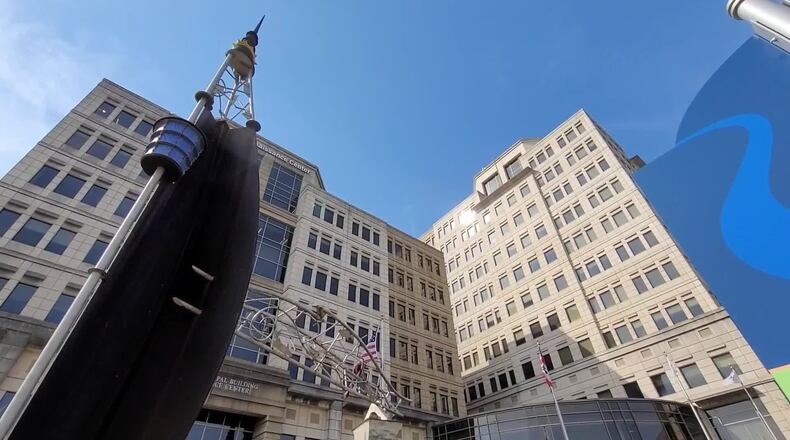The commissioners asked everyone to hold expenses to 2019 actual spending, but County Administrator Judi Boyko said few strictly followed that directive. General fund expenses in 2019 totaled $100.4 million.
“The majority of the offices did come in slightly above, but when we did send out the instructions we made it clear that we do understand that there are collective bargaining agreements that are going to be renewed in 2022,” Boyko said. “We understand that there might be an element of inflationary costs for materials and supplies.”
The tax budget is a preliminary spending plan required by law, the final budget won’t be passed until the end of the year after the commissioners hold hearings with other office holders, departments and independent boards.
“It’s a preliminary budget, nobody expects that to come about as it was presented,” Commissioner Don Dixon said. “It’s more of a ‘if we can get it this what we’d like to have’. There’ll be reductions for sure, that’s just a wish list. It gives us an idea what they’ve got in mind, now we’ve got to figure out what’s their priorities and how do we get there.”
The sheriff consumes the largest chunk of the general fund budget by far and next year asked for nearly $44 million, which is 12% higher than 2019 — the last normal budgeting year pre-pandemic — and 41% higher than was actually spent last year. The commissioners ordered 7.4% general fund cuts over two years early in the crisis because revenue projections were dismal.
“The commissioners asked for very painful concessions,” Chief Deputy Anthony Dwyer told the Journal-News. “We answered that call and during that time did not have the luxury of just stopping what we do and working from home. I had no one working remotely, we all had to come to work every day. We got through it and now we’re asking that the commissioners consider the contractual increases and what’s needed to operate our operation appropriately.”
Despite what appears at this early juncture to be a rosy financial picture for next year Boyko said they are paying close attention to all the economic indicators as they move into a post-pandemic reality because “nobody knows.”
“We need to be eyes wide open as we approach the 2022 economy,” Boyko said.
The general fund pays for the major expenses of the county that aren’t supported by other levies or revenue sources. The largest revenue source is sales tax and those receipts have climbed to record numbers this year, despite or perhaps because of the pandemic. Hefty federal relief checks and beefed up unemployment benefits created an artificially robust economy.
Officials are projecting a 10.8% increase in sales tax for this year up to $49.5 million, but only a 2% increase year-to-year or $50.5 million for next year.
“Even though we think they are going to be higher than traditional years just because of the funding and disposable income that’s still being expended, we’re still believing that at some point the economy is going to be responsive to the money not being available,” Boyko said.
There are other departments like Water and Sewer that runs on service fees and Children Services that have their own levies and other governmental funding, plus independent boards like the Board of Developmental Disabilities also included in the tax budget.
The total tax budget expenditures for next year are projected at $462 million supported by $676 million in revenues, which includes the $37.2 million federal American Rescue Plan windfall. The county received $74.5 million in two installments of $37.2 million this year and next.
Aside from pinpointed expenditures for next year the commissioners have earmarked $15 million in a newly created capital reserve fund that is fueled with money the county no longer has to spend on general fund debt. The commissioners paid their last debt payment last year.
Commissioner T.C. Rogers said it’s time to determine how big county government should be in terms of how much they spend, but also to right-size their assets. The new fund will allow them to address whatever a new study they are commissioning details, as well as tackle deferred maintenance projects like the Historic Courthouse.
“Besides the final number on how big a county government should be financially, we want to know how big should the footprint be,” Rogers said. “The footprint being collective square footage of all of our assets and the cost to maintain them.”
About the Author

